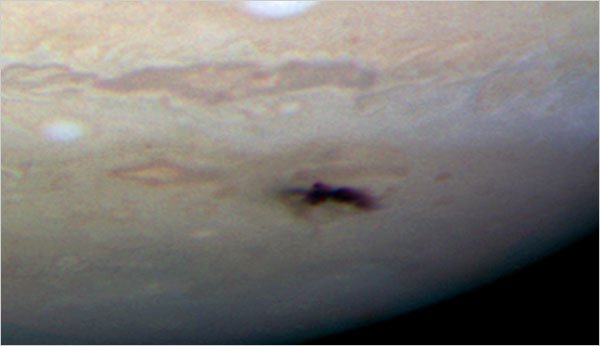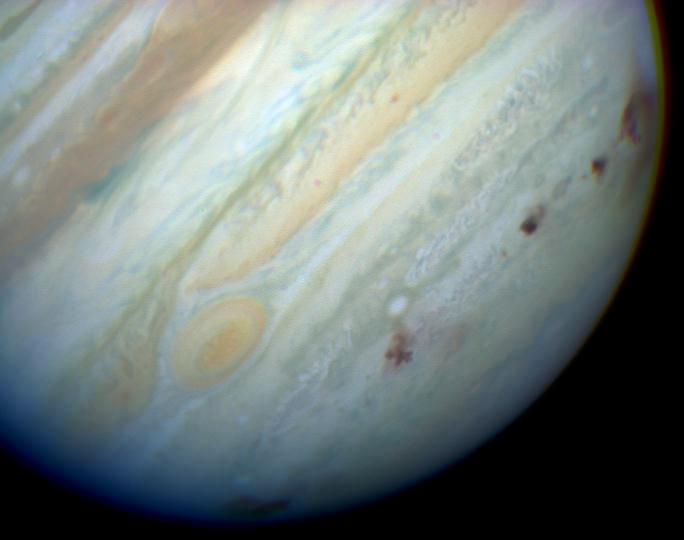Hi Wayne, I think this is it showing the SL9 impact scars. Hubble Space Telescope.
xXTheOneRavenXx":3p5zv7tv said:
Maybe a large KBO? Jupiter is known for help having shaped the belt with it's gravitational influence.
Hi TheOneRaven.
I do not know about a 'Large' KBO. Perhaps the imactor did originate from the KBO in the very remote past, but it would be a tiny one, no more than a few hundred metres across. A large KBO like Orcus, Quaoar, or even a larger KBO like Pluto or Eris, would leave an enormous scar in Jupiter's atmosphere. Besides, IMHO it would be long way for a KBO to be perturbed to come this far in. I reckon it's just a normal tiny comet or asteroid.
The impactor was tiny, certainly less than 1 KM across, even less then 500 metres across.
The question of whether this impact is related to the SL9 impacts is interesting. Myself I do not think so. I think it is just chance that the impacts were in the southern hemisphere.
The SL9 impacts were approx 44 degrees south, this new one informally known as the Wesley Impact (named after Anthony Wesley in Australia who discovered it), is approx 57 degrees south. 13 degrees further south than the SL9 fragments in July 1994.
brandbll":3p5zv7tv said:
This is why we need to get an orbiter back around Jupiter, we miss stuff like this. Imaghine how useful that would be right now. Sucks New Horizon wasn't just a tad behind schedule or it could have gotten us some pretty nice pictures.
Hi Brandon,
Perhaps a future impact may be seen by the upcoming JUNO mission or the proposed EJSM (Europa Jupiter System Mission) or JGO (Jupiter Ganymede Orbiter) or IVO (Io Volcano Observer) missions. We never know.
Andrew Brown.







